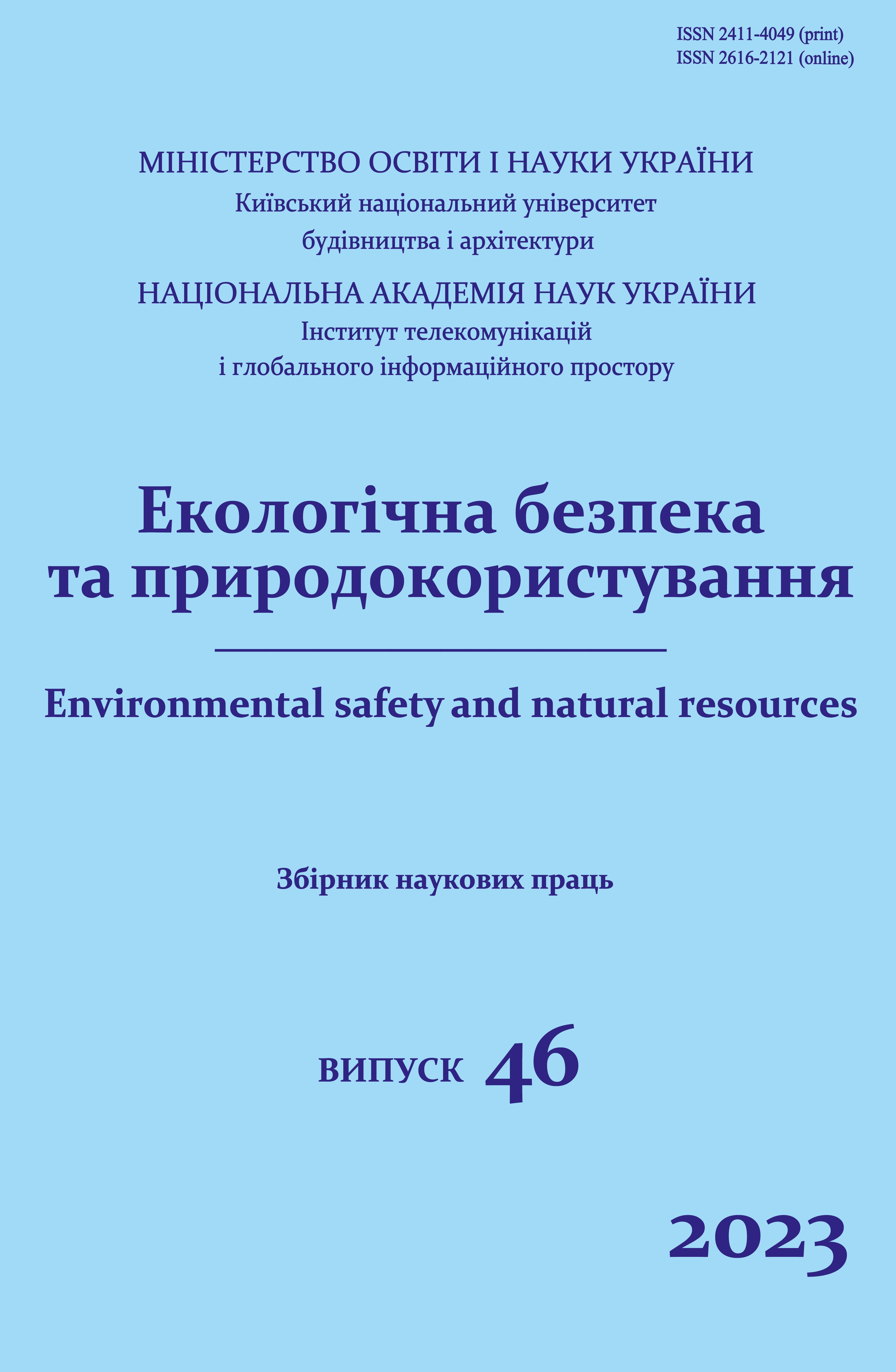Prospects for creating surfaces with vegetation on buildings in Poland
DOI:
https://doi.org/10.32347/2411-4049.2023.2.23-34Keywords:
sustainability, green structures, energy efficiency, biologically active area, water retentionAbstract
According to the World Green Building Council, energy demand in buildings will increase double, by 2050. Worldwide, construction and the built environment contribute about 39% of global carbon dioxide (28% from operational emissions, from energy needed to heat, cool and power them, and the remaining 11% from materials and construction) and 50% of the world’s resource consumption. Thus, maximising energy efficiency and improving the environment are the main directions of construction development. Both tasks can be solved using green structures that connect living plants with building structures (green roofs, living facades and living interior walls). The data from the main organisations in the branch has been analysed: United Nations, The World Green Building Council, European Parlament and Council, and also Global Alliance for Buildings and Construction. They state the need for green and blue infrastructure, and sustainable urbanisation, incl. decarbonising of buildings and mitigation of urban heat islands. Greening of buildings is a measure to achieve the requirements. In addition, it improves health and well-being or increases biodiversity. Poland has the corresponding norms to stimulate the greening of buildings. The term “biologically active area” is defined as the area with an area arranged in a way that ensures natural vegetation of plants and rainwater retention; such an area also covers 50% of the surface of terraces and flat roofs with a vegetation layer with vegetation and other surfaces (e.g. green facade), providing natural vegetation of plants, with an area of not less than 10 m2, surface water in this area. Special tax policies give privileges to those who green their building(s). These measures have a good result in spreading green structures, which is proved by the objects represented in the article.
References
The commitment. World Green Building Council. (2023, March 31). Retrieved April 25, 2023, from https://worldgbc.org/thecommitment/
Profile of an asia pacific network partner: AGC. World Green Building Council. (2023, January 12). Retrieved April 25, 2023, from https://worldgbc.org/article/profile-of-an-asia-pacific-network-partner-agc/
IPCC (2014). Summary for Policymakers. In: Climate Change 2014: Mitigation of Climate Change. Contribution of Working Group III to the Fifth Assessment Report of the Intergovernmental Panel on Climate Change [Edenhofer, O., R. Pichs-Madruga, Y. Sokona, E. Farahani, S. Kadner, K. Seyboth, A. Adler, I. Baum, S. Brunner, P. Eickemeier, B. Kriemann, J., Savolainen, S. Schlömer, C. von Stechow, T. Zwickel and J.C. Minx (eds.)]. Cambridge University Press, Cambridge, United Kingdom and New York, NY, USA. https://www.ipcc.ch/site/assets/uploads/2018/02/ipcc_wg3_ar5_summary-for-policymakers.pdf
International Energy Agency. (2021). World Energy Outlook 2021. Paris, France; International Energy Agency. https://www.iea.org/reports/world-energy-outlook-2021
World Health Organization. (2022, December 19). Ambient (outdoor) Air Pollution. World Health Organization. Retrieved April 25, 2023, from https://www.who.int/news-room/fact-sheets/detail/ambient-(outdoor)-air-quality-and-health
World Green Building Council. (2022). Climate change resilience in the built environment. Principles for adapting to a changing climate. Toronto, Canada; World Green Building Council. https://worldgbc.org/article/climate-change-resilience-in-the-built-environment-guide/
United Nations Environment Programme. (2022). 2022 Global Status Report for Buildings and Construction: Towards a Zero-emission, Efficient and Resilient Buildings and Construction Sector. Nairobi, Kenya; United Nations. https://www.unep.org/resources/publication/2022-global-status-report-buildings-and-construction
World Economic Forum. (2021). Green Building Principles: The Action Plan for Net-Zero Carbon Buildings. Geneva, Switzerland; World Economic Forum. https://www.weforum.org/reports/green-building-principles-the-action-plan-for-net-zero-carbon-buildings/
United Nations. (2017). New Urban Agenda. Quito, Equador; United Nations. https://habitat3.org/wp-content/uploads/NUA-English.pdf
Ministry of Investment and Economic Development. (2019). Sustainable urban development in Poland: National urban policy in the context of the 2030 Agenda’s Goal 11 and the New Urban Agenda. Warszawa, Poland; Ministry of Investment and Economic Development. https://www.funduszeeuropejskie.gov.pl/media/72570/raport_en_final.pdf
Global Alliance for Buildings and Construction. (2020). GlobalABC Roadmap for Buildings and Construction 2020-2050. Towards a zero-emission, efficient, and resilient buildings and construction sector. Paris, France; Global Alliance for Buildings and Construction. https://globalabc.org/sites/default/files/inline-files/GlobalABC_Roadmap_for_Buildings_and_Construction_2020-2050_3.pdf
Proposal for a DIRECTIVE OF THE EUROPEAN PARLIAMENT AND OF THE COUNCIL on the energy performance of buildings (recast) (2023).
Announcement of the Minister of Investment and Development of 8 April 2019 (2019). In: Journal of Laws, article no. 1065.
Drozd, W. (2019). Problems and benefits of using green roofs in Poland. IOP Conference Series: Earth and Environmental Science, 214, 012076. https://doi.org/10.1088/1755-1315/214/1/012076
Pawłowska, K., & Jawecki, B. (2021). The determination of priority areas for the construction of green roofs with use of the urban area valorisation method. Sustainability, 13(23), 13227. https://doi.org/10.3390/su132313227
European Commission, Directorate-General for Climate Action, (2023). EU-level technical guidance on adapting buildings to climate change: best practice guidance, Publications Office of the European Union. https://data.europa.eu/doi/10.2834/585141
Person. (2015, July 30). Tax exemptions for green roofs or walls. Wroclaw.pl. Retrieved April 25, 2023, from https://www.wroclaw.pl/en/tax-exemptions-for-green-roofs-or-walls
Zielone Dachy. Ogrodowa Pasja. (n.d.). Retrieved April 25, 2023, from http://www.ogrodowapasja.com.pl/nasze-realizacje/zielone-dachy/
Wizyta. Muzeum Narodowe we Wrocławiu. (2018, May 21). Retrieved April 25, 2023, from https://mnwr.pl/wizyta/
International Congress Centre in Katowice: Conferences, congresses, exhibitions, concerts and sport events. www.mckkatowice.pl. (n.d.). Retrieved April 25, 2023, from https://www.mckkatowice.pl/en/
International Congress Centre in Katowice: Conferences, congresses, exhibitions, concerts and sport events. www.mckkatowice.pl. (n.d.). Retrieved April 25, 2023, from https://www.mckkatowice.pl/en/
Białas, K. (2021, October 28). Kalisz: Masz Zielony Dach Lub fasadę? Nie Zapłacisz Podatku. Magazyn WhiteMAD - moda, architektura, design w jednym miejscu. Retrieved April 25, 2023, from https://www.whitemad.pl/kalisz-masz-zielony-dach-lub-fasade-nie-zaplacisz-podatku/
Postawka-Lech, H. (2020, October 14). Mathematical Precision. EXG's headquarters in Czestochowa from OVO Grąbczewscy Architekci. AiB. Retrieved April 25, 2023, from https://www.architekturaibiznes.pl/en/math-precision,21856.html
Zielona ściana ozdobi budynek urzędu W częstochowie. Miasto Zachęca do Tego Kroku Innych właścicieli budynków. Czestochowa Nasze Miasto. (n.d.). Retrieved April 25, 2023, from https://czestochowa.naszemiasto.pl/zielona-sciana-ozdobi-budynek-urzedu-w-czestochowie-miasto/ga/c1-8406889/zd/64286621
Downloads
Published
How to Cite
Issue
Section
License
Copyright (c) 2023 Ujma A.

This work is licensed under a Creative Commons Attribution 4.0 International License.
The journal «Environmental safety and natural resources» works under Creative Commons Attribution 4.0 International (CC BY 4.0).
The licensing policy is compatible with the overwhelming majority of open access and archiving policies.

